Plastic Surgery
Introduction
The surgical specialty of plastic surgery deals with the restoration, reconstruction, or modification of the human body. Reconstructive and cosmetic surgery make up the two primary areas.
Microsurgery, hand surgery, craniofacial surgery, and burn therapy are all included in reconstructive surgery. Cosmetic, or aesthetic, surgery seeks to enhance the appearance of the body, whereas reconstructive surgery attempts to reconstruct a component of the body or improve its functionality.
A thorough explanation of Since plastic surgery shares many characteristics with other surgical disciplines and lacks a unique anatomical object, it has never been fully established. Treating problems that require or may require tissue translocation skills is a fundamental aspect of plastic surgery.
Etymology
The term “plastic” in plastic surgery refers to the idea of “reshaping” and is derived from the Greek word plastikē (tekhnē), which means “the art of modeling” of flexible flesh. As early as 1598, this connotation was recognized in English.
The term “plastic” was first used in the context of surgery in 1816, and Eduard Zeis coined the term in 1838. This put the word’s current technical meaning of “engineering material made from petroleum” behind it by seventy years.
History
The first mention of reconstructive surgery for nose fractures is found in the Edwin Smith papyrus, an Egyptian medical document from circa 1600 BC. The American Egyptologist Edwin Smith was honored with a textbook on trauma surgery in its early years.
From the first century BC, the Romans also undertook plastic surgery using basic methods, such as fixing broken ears. They did not dissect humans or animals for religious reasons, thus all of their knowledge came from the writings of their Greek forebears.
Nevertheless, Aulus Cornelius Celsus left behind several precise anatomical descriptions, some of which are particularly relevant to plastic surgery, such as his research on the genitalia and bones.
Certain forms of plastic surgery in India are mentioned in a number of ancient Sanskrit medical treatises, including the writings of Sushruta and Charaka. Around the year 750 AD, during the Abbasid Caliphate, several texts were translated into Arabic.
Through middlemen, the Arabic translations found their way into Europe. The Branca family of Sicily and Gaspare Tagliacozzi of Bologna, Italy, were acquainted with Sushruta’s methods. The Arab doctor, surgeon, and chemist Al-Zahrawi is regarded as the “Father of Surgery” and by some as the first plastic surgeon ever.
He is a pioneer in all areas of surgery. British doctors visited India to witness the use of Indian techniques in rhinoplasties. By 1794, reports regarding Indian rhinoplasty done by a vaidya (potter) called Kumhar appeared in the Gentleman’s Magazine.
Joseph Constantine Carpue studied regional plastic surgery techniques in India for twenty years. In 1815, Carpue succeeded in carrying out the first significant surgery in the history of the West.
Westerners made additional modifications to instruments that were mentioned in the Sushruta Samhita. More recent and informative descriptions and classifications of hypospadias can be found in Sabuncu’s book from 1465.
A thorough description of the urethral meatus’ location was given. Additionally, Sabuncuoglu provided a thorough description and categorization of ambiguous genitalia.
Heinrich von Pfolspeundt wrote of a procedure “to make a new nose for one who lacks it entirely, and the dogs have devoured it” in Europe in the middle of the fifteenth century. The procedure involved taking skin from the back of the arm and suturing it in place.
However due to the risks involved with any kind of surgery, particularly when it comes to the head or face, such procedures did not become widespread until the 19th and 20th centuries. The book, description, and categorization of hypospadias by Sabuncu in 1465 were more current and helpful.
The urethral meatus’s location was thoroughly explained. The description and categorization of ambiguous genitalia were also covered in length by Sabuncuoglu.
The method of taking skin from the back of the arm and suturing it in place “to make a new nose for one who lacks it entirely, and the dogs have gorged it,” Heinrich von Pfolspeundt wrote in Europe in the middle of the fifteenth century.
However, such surgery did not become prevalent until the 19th and 20th centuries due to the risks connected with any type of surgery, especially when it involves the head or face. British military officer Joseph Carpue successfully operated on him in 1814 after he had lost his nose to the harmful effects of mercury treatments.
Rhinoplastik, the seminal book written by German surgeon Carl Ferdinand von Graefe, was published in 1818. By replacing the initially delayed pedicle flap with a free skin graft from the arm, Von Graefe altered the Italian technique.
The first plastic surgeon in the United States was John Peter Mettauer. Using devices he had created himself, he conducted the first cleft palate procedure in 1827. Johann Friedrich Dieffenbach was an expert in early plastic surgery and skin transplantation.
Numerous contemporary reconstructive surgical procedures were pioneered by him through his work in rhinoplastic and maxillofacial surgery.
Dieffenbach developed the idea of reoperation to enhance the esthetic aspect of the repaired nose in his extensive work Operative Chirurgie, published in 1845. Some have referred to Dieffenbach as the “father of plastic surgery”.
Scientific American published a description of another Bellevue Hospital plastic surgery case for nose rebuilding in 1884.
American otorhinolaryngologist John Roe demonstrated his work in 1891 with a case study of a young woman for whom he had surgically removed a dorsal nasal hump for esthetic purposes.
Robert Weir attempted in vain to repair sunken noses in 1892 using xenografts, or duck sternum. German urologist James Israel and American George Monks both reported the effective use of heterogeneous free-bone grafting in 1889 and 1896, respectively.
To repair faults in the saddle nose. The German surgeon with training in orthopedics, Jacques Joseph, published the first account of reduction rhinoplasty in 1898.
The pioneer of cosmetics and perfumes, Alexander Ostroumov, established a distinct plastic surgery division at his Moscow Institute of Medical Cosmetics in 1910. Jacques Joseph’s book Nasenplastik und Sonstige Gesichtsplastik was released in 1928.
Nascency of Maxillofacial Surgery
Because the trenches primarily provided bodily protection, the advent of weaponry like machine guns and explosive shells during World War I led to the creation of trench warfare, which quickly increased the frequency of soldier mutilations to the faces and heads.
The doctors had to act swiftly and strategically to treat the maximum number of injuries because they were ill-prepared for both these injuries and a large number of injuries. Because of the unhygienic environment, facial injuries were difficult to treat on the front lines.
Many infections could emerge. Occasionally, some stitches were made. on a jagged gash without considering the quantity of flesh removed, leaving warriors with horrific and deformed scars in their wake.
Some suffered severe injuries for which there were insufficient stitches, resulting in blindness or large holes where their nose should have been.
Alarmed by the sheer volume of fresh facial injuries and the dearth of effective surgical methods, Harold Gillies made the decision to commit an entire hospital to the comprehensive reconstruction of facial injuries.
He considered the psychological component. In order to make soldiers less scared when they looked in the mirror, Gillies added skin grafts into their regimens.
The development of techniques leading to the rebuilding of injured faces has been made feasible by the multidisciplinary approach to treating facial lesions, which brings together plastic surgeons, dentists, technologists, and trained nurses.
Harold Gillies recognized the need to develop the field of maxillofacial surgery, which at this point would be specifically focused on the treatment of combat wounds.
He has created a novel method for reconstructing face deformities brought on by wartime weaponry, including bone grafts from the ribs and tibia in addition to rotational and transposition flaps.
Gillies conducted experiments using this approach, so he was aware that the first step was to restore healthy tissue to its original location before filling it in with tissue from another area of the soldier’s body.
The goal of one of the most effective skin grafting methods was to leave some portion of the link to the body intact. It was made possible by elevating and releasing a skin flap from the incision.
The skin flap would then be swung over the wound site while remaining attached to the donor site. This procedure guarantees that blood is given to the skin and maintains the physical connection.
This raises the likelihood that the body will accept the skin graft. At this point, we helped to improve the treatment of infections as well, which meant that significant injuries were now mostly treatable with the help of Gillies’ novel technique.
There were soldiers who showed up at Gillies’s hospital with no eyes, cheekbones, chins, or even noses. However, psychological trauma was the most significant trauma for them.
Development of Modern Techniques
Sir Harold Gillies is largely regarded as the founder of contemporary plastic surgery. During World War I, he was a New Zealand otolaryngologist practicing in London.
While treating soldiers with disfiguring facial injuries, he invented many of the techniques used in modern facial surgery. He served with the Royal Army Medical Corps as a medical minder during World War I.
He convinced the army’s chief surgeon, Arbuthnot-Lane, to open a facial injury ward at the Cambridge Military Hospital, Aldershot, after working on skin grafts with the renowned French oral and maxillofacial surgeon Hippolyte Morestin.
This ward was later upgraded to a new hospital for facial repairs at Sidcup in 1917. There, Gillies and his associates created numerous plastic surgery techniques, doing over 11,000 procedures on over 5,000 men.
Following the war, Gillies and Rainsford Mowlem established a private practice with a number of well-known patients. (primarily troops who have sustained gunshot wounds to their faces).
Gillies also traveled widely to promote his cutting-edge methods all over the world. Archibald McIndoe, Gillies’s cousin, joined the clinic in 1930 and had a strong interest in plastic surgery.
Gillies and his colleagues were split up when World War II broke out because the various armed services provided plastic surgery at different rates. The primary army plastic surgery unit was established at Rooksdown House in Basingstoke, where Gillies was assigned.
Tommy Kilner, who collaborated with Gillies throughout World War I and is now honored with a surgical tool called the Kilner cheek retractor, was assigned to Queen Mary’s.Roehampton Hospital; Mowlem proceeded to St Albans.
As a consultant to the Royal Air Force, McIndoe established a Center for Plastic and Jaw Surgery after relocating to the recently renovated Queen Victoria Hospital in East Grinstead, Sussex. He addressed severe face deformities, including the loss of eyelids.
Which is common among aircrew who have burned fuel, as well as really deep burns there. In addition to creating novel methods for treating severely burned hands and faces, McIndoe is widely credited with realizing the value of the victims’ rehabilitation, especially their social reintegration back into society.
The patients were allowed to wear their service uniforms while he disposed of the “convalescent uniforms”. Additionally, he persuaded the community to support the patients and extended an invitation for them to visit their homes with the aid of two friends, Neville and Elaine Blond.
The crew referred to McIndoe as “The Boss” or “The Maestro,” and he continued to address them as “his boys.
Among his other noteworthy accomplishments were the development of the walking-stalk skin graft and the unintentional discovery—made after he noticed that pilots who had crashed on land and in the sea—had submersion in saline.
Enhanced healing in addition to increasing survival rates for patients with severe burns. The Queen Victoria Hospital in Sussex saw the establishment of the Guinea Pig Club as a result of his unorthodox and experimental therapies.
Among the more well-known individuals in his “club” were Jimmy Edwards, Bill Foxley, and Richard Hillary.
Sub-Specialties
The field of plastic surgery is vast and has many subcategories. The American Board of Plastic Surgery in the US certifies plastic surgeons as board-certified. Among the subspecialties in plastic surgery are:
Aesthetic Surgery
Plastic surgery’s core practice is aesthetic surgery, which covers both body and facial aesthetic procedures. Plastic surgeons perform isolated surgeries to enhance overall appearance in addition to all reconstructive surgical procedures using the principles of cosmetic surgery.
Burn Surgery
Usually, there are two stages to burn surgery. The immediate post-burn treatment is known as acute burn surgery. Reconstructive burn surgery is done once the burn injuries have healed.
Craniofacial Surgery
Pediatric and adult craniofacial surgery are the two subspecialties of craniofacial surgery. Treatment of congenital abnormalities of the craniofacial skeleton and soft tissues, including cleft lip and palate, microtia, craniosynostosis, and pediatric fractures, is the main focus of pediatric craniofacial surgery.
Adult craniofacial surgery mostly treats revision procedures, orthognathic surgery, facial feminization surgery, and reconstructive surgeries following trauma or malignancy. An essential component of any training program in plastic surgery is craniofacial surgery.
A craniofacial fellowship is a means of obtaining more training and subspecialization. Maxillofacial surgeons also perform craniofacial surgeries.
Ethnic Plastic Surgery
A common practice in plastic surgery is “passing” by changing an ethnicity through the use of plastic surgery.
Hand Surgery
Hand surgery treats acute trauma, degenerative conditions of the hand and wrist, congenital abnormalities of the upper limbs, and peripheral nerve injuries (e.g., carpal tunnel syndrome, and brachial plexus injuries).
In order to replant an amputated extremity, microsurgery, and hand surgery are essential components of plastic surgery training. Orthopedic and general surgeons also work in the subject of hand surgery.
On the delicate hand, scar tissue growth following surgery can be problematic, potentially leading to loss of digit function and dexterity if severe enough. In a few instances, women have undergone hand surgery to fix apparent defects in order to obtain the ideal engagement ring picture.
Microsurgery
Rebuilding lost tissues typically involves reconnecting blood arteries and moving a fragment of tissue to the repair site during microsurgery. Hand surgery/replantation, brachial plexus surgery, head and neck reconstruction, and breast reconstruction are popular specialist areas.
Pediatric Plastic Surgery
Medical problems that affect children can differ greatly from those that affect adults. Pediatric plastic surgeons specialize in treating children with various congenital abnormalities or disorders that are best treated during childhood.
Pediatric plastic surgeons treat a variety of conditions, such as congenital hand abnormalities, cleft lip and palate, syndactyly (webbing of the fingers and toes), and polydactyly (extra fingers and toes at birth).
Prison Plastic Surgery
The practice of doing plastic surgery on jailed individuals to lower their recidivism rate was introduced in the early 1900s and continued until the mid-1990s. distinct from surgery carried out for medical necessity.
Techniques and Procedures
Skin grafting, or the transfer of skin tissue, is a highly popular treatment in plastic surgery. Both donors and recipients can provide skin for grafts:
- The recipient is the source of the autograft. In the event that genuine tissue is unavailable or insufficient, artificial materials like integra—a mixture of silicone and collagen from cow tendon with glycosaminoglycans—or cultivated epithelial cell sheets grown in vitro are viable substitutes.
- Allografts are derived from homologous donors.
- Xenografts are obtained from a donor who is not from the same species.
Good outcomes are typically anticipated from plastic surgery procedures that prioritize precise incision planning to align with natural skin folds or lines, suitable wound closure options, the use of the best suture materials available, and prompt removal of exposed sutures to ensure buried sutures hold the wound closed.
Reconstructive Surgery
Functional limitations brought on by burns, traumatic injuries including face bone fractures and breaks, congenital abnormalities like cleft palates or cleft lips, developmental abnormalities, infection and disease, cancer, or tumors are all corrected by reconstructive plastic surgery.
The restoration of both form and function is the aim of reconstructive plastic surgery. Tumor excision, laceration repair, maxillofacial surgery, scar revision, hand surgery, and breast reduction plasty are the most often performed reconstructive operations.
The American Society of Plastic Surgeons reports that women had 4% less reconstructive breast reductions in 2018 compared to the previous year. In 2018, there was an 8 percent drop in male breast reductions. There were 57,535 procedures in 2018.
Other popular reconstructive surgical operations include the creation of a new outer ear in cases where one is congenitally lacking, surgery for cleft lip and palate, contracture surgery for burn survivors, and reconstruction of the breast following a mastectomy for cancer treatment.
When no local tissue is available, plastic surgeons can cover a defect by transferring tissue via microsurgery. By suturing arteries and veins as small as 1 to 2 millimeters in diameter, free flaps of skin, muscle, bone, fat, or a mix of these can be taken out of the body, transported to another location on the body, and rejoined to a blood supply.
Cosmetic Surgery Procedures
Cosmetic surgery is a type of elective surgery when normal body components are operated upon with the sole intention of enhancing an individual’s appearance and/or eliminating symptoms of aging.
Certain functional procedures, like breast reductions, can also be used to treat functional symptoms of pain, including neck or backaches.
Following a mastectomy and breast cancer, cosmetic surgery is also performed to restore the natural contour of the breasts that was lost during the cancer’s removal. In the United States alone, almost 16 million cosmetic treatments were carried out in 2014.
Since the year 2000, the quantity of cosmetic treatments carried out in the US has nearly doubled. 92 percent of In 2014, women underwent cosmetic operations at a rate of 88% compared to 88% in 2001.
In 2020, 15.6 million cosmetic treatments were carried out, with nose reshaping, eyelid surgery, facelifts, liposuction, and breast augmentation being the five most popular procedures. Since 2006, breast augmentation has remained among the top 5 cosmetic surgery operations.
In 2020, 84% of all breast augmentations utilized silicone implants, and 16% used saline implants. The statistics for thirty-four various cosmetic treatments are examined by the American Society for Aesthetic Plastic Surgery.
Nineteen of the Surgical procedures like facelifts and rhinoplasty are performed. Among the nonsurgical treatments are laser hair removal and Botox. According to their survey from 2010, there were 9,336,814 procedures performed in the US overall. 1,622,290 of those operations involved surgery.
Additionally, they discovered that 81% of the treatments were performed on Caucasian patients. By 1969, over half a million Americans had cosmetic surgical treatments performed; in 1949, only 15,000 had done so.
According to the American Society of Plastic Surgeons (ASPS), compared to approximately 14,000 treatments in 1996, over 333,000 cosmetic procedures were carried out on patients in the US who were 18 years of age or younger in 2005.
Compared to just over 218,900 patients in the same age range in 2010, over 226,994 individuals between the ages of 13 and 19 got plastic surgery in 2018.
Concerns with young individuals having plastic surgery include the cost of follow-up surgeries required to address issues following the first cosmetic procedure, long-term health issues resulting from plastic surgery, as well as untreated mental health conditions that might have prompted the procedure.
In the United States, the use of cosmetic operations has increased across racial and ethnic groups, with increases observed among Caucasian Americans as well as African Americans, Asian Americans, and Hispanic Americans.
Asia has witnessed a spike in the popularity of cosmetic surgery, with China and India emerging as the region’s largest cosmetic surgery markets. Because of their proficiency in facial bone procedures, South Korea is likewise becoming more well-known.
The yearly plastic surgery procedural statistics show that there were 15.9 million surgical and minimally invasive cosmetic treatments performed in the US in 2015—a 2 percent increase over 2014.”
Plastic surgery is slowly growing, with a 115% growth from 2000 to 2015. According to research published in 2021, requests for cosmetic operations have increased dramatically since the start of the COVID-19 epidemic, presumably as a result of more people videoconferencing.
Estimates of the increase in requests were as high as 20% in France and 10% in the United States.
The most popular aesthetic/cosmetic procedures include:
- A “tummy tuck” or abdominoplasty involves firming and contouring the abdomen.
- Reshaping of the upper or lower eyelids, particularly Asian blepharoplasty, is known as blepharoplasty (“eyelid surgery”).
- Phallothorapie (“penile surgery”): the process of building (or reconstructing) a penis or, in certain cases, surgically altering it artificially, usually for aesthetic reasons
- Breast augmentation
- Breast augmentations, sometimes known as “breast implant” or “boob job” procedures, involve augmenting the breasts using silicone gel prosthesis, saline, or fat grafting. These procedures were first carried out for women who had macromastia.
- Reduction mammoplasty, often known as “breast reduction”) peeling off skin and glandular tissue to relieve shoulder and back pain in males with gynecomastia and women with gigantomastia.
- Mastopexy (“breast lift”): Reshaping or lifting the breasts to reduce sagging, frequently following weight loss (i.e., following a pregnancy, for instance). Instead of glandular tissue, breast skin must be removed.
- A “breast lift with breast implants” or “augmentation mastopexy” involves raising the breasts to make them less droopy, moving the nipple to a higher place, and using silicone or saline gel implants to increase breast size. According to recent research, simultaneous augmentation mastopexy (SAM), a more recent surgical approach, is a safe surgery with few side effects. Before making any surgical incisions to the breast, the SAM procedure entails invaginating and tacking the tissues to visualize the outcome.
- Buttock augmentation (“butt implant”): silicone implants or fat grafting (“Brazilian butt lift”), which involves transferring fat from different body parts to the buttocks for aesthetic purposes
- A medical instrument called cryolipolysis is used to kill fat cells. Its method of non-invasive localized fat deposit removal to alter body contours is based on controlled cooling.
- Cryoneuromodulation: Gaseous nitrous oxide is used to treat superficial and subcutaneous tissue structures. It can be used to cure dermatological disorders, temporarily reduce wrinkles and pain, and cryotreat specific tissue areas.
- Calf augmentation: Adding mass to the calf muscles with silicone implants or fat transfer
- Labiaplasty is the surgical procedure to reduce and reshape the labia.
- Lip augmentation: a procedure that modifies the appearance of the lips by injecting fillers or surgically enlarging them with lip implants to increase their fullness.
- Cheiloplasty: lip repair with surgery
- Rhinoplasty, or “nose job”: is a procedure to reconstruct the nose that is occasionally performed to improve breathing caused by anatomical flaws.
- Otoplasty (sometimes known as “ear surgery” or “ear pinning”) is the process of altering an ear, usually by pinning the projecting ear closer to the head.
- “Facelift” or rhytidectomy: removing wrinkles and aging indicators from the face
- The tightening of loose neck tissues is known as a “neck lift.” For lower face rejuvenation, this treatment is often paired with a facelift.
- “Forehead lift” or “brow lift”: browplasty smoothes the skin over the forehead and raises the eyebrows.
- midface lift, often known as “cheek lift”: the cheeks tighten
- Genioplasty: the process of augmenting the chin using a person’s own bones or a silicone implant placed through soft tissue sutures.
- Mentoplasty is the term for chin surgery. This may entail making the chin appear larger or smaller. Face implants are used to achieve enhancements. Reducing the size of the chin bone was necessary for chin reduction.
- Implants in the cheeks for cheek enhancement, or “cheek implant”
- Orthognathic surgery involves making changes to the upper and lower jaw bones (via osteotomy) in order to realign the teeth and address problems with jaw alignment.
- Collagen, fat, and other tissue fillers, like hyaluronic acid, can be injected.
- “Arm lift” or brachioplasty: a procedure that removes extra skin and fat from the area between the elbow and the armpit.
- The process of reducing the depth of face pores and exfoliating dead or damaged skin cells is known as laser skin rejuvenation or laser resurfacing.
- Liposuction (also known as “suction lipectomy”) is the process of removing fat deposits using either ultrasonic energy or a conventional suction technique.
- Zygoma reduction surgery involves resecting a portion of the zygomatic bone and arch and executing an osteotomy to narrow the width of the face.
- Jaw reduction is the process of reducing the angle of the mandible to make the jaw more slender and less angular.
- Extraction of Buccal Fat: the removal of the buccal pads
- Body contouring is the process of eliminating extra skin and fat from various body parts while enhancing the appearance of the remaining skin’s suppleness. The procedure is common among people who have lost a substantial amount of weight and have excess drooping skin around certain body parts. When the skin is stretched beyond its breaking point and cannot return to its normal position against the body, it loses elasticity, a condition known as elastosis, and it also ages.
- Sclerotherapy: the process of eliminating Telangiectasia, or visible “spider veins,” that emerge on the skin’s surface.
- Dermal fillers: These are injected beneath the skin to provide a feature or area of the face a more youthful, fuller appearance. The dermal filler hyaluronic acid is one kind. The human body naturally contains hyaluronic acid in many parts of it. It is essential for transporting blood-derived nutrients to the skin’s cells. Because it functions as a cushion to the bones where the articular cartilage casing has been reduced, it is also frequently utilized in patients with arthritis. Over time, this field has developed, leading to the creation of synthetic hyaluronic acid that is used in other cosmetic surgery procedures like facial augmentation.
- Micropigmentation is the process of applying natural pigments to specific areas of the body, such as the lips to create lipstick, the eyes to create eye shadow, and the cheekbones to create a blush-like appearance, in order to create permanent makeup. A machine that quickly injects a tiny needle with pigment into the skin to create a permanent coloring of the chosen area is used to insert the pigment beneath the skin.
Botox, liposuction, eyelid surgery, breast implants, nose jobs, and facelifts were the most common surgical procedures in 2015.
The most common surgical procedure performed in the United States that year was Rhinoplasty (Nose reshaping), accounting for 15.2% of all cosmetic surgical procedures, followed by Blepharoplasty (Eyelid surgery), which accounted for 14% of all procedures.
According to the 2020 Plastic Surgery Statistics Report published by the American Society of Plastic Surgeons. Rhytidectomy (Facelift) accounted for 10% of all treatments, making it the third most popular procedure after liposuction (9.1%).
Complications, Risks, and Reversals
There are dangers associated with any procedure. Hemostasis, nerve damage, infection, scarring, implant failure, and end-organ damage are among the common side effects of cosmetic surgery.
One of the many potential side effects of breast implants is rupture. Eisenberg found that overfilling saline breast implants by 10–13% dramatically decreased the rupture-deflation rate to 1.83% at 8 years.
Post-implantation in research involving his 4761 augmentation mammaplasty patients. The FDA announced in 2011 that within ten years of receiving breast augmentation implants, one in five patients will require their removal.
Psychological Disorders
Researchers believe that an obsession with plastic surgery is linked to psychological disorders like body dysmorphic disorder, even though media and advertising do have a significant influence on the lives of many people, for example.
By leading people to believe that plastic surgery is a legitimate way to change our identities to our liking. There is a connection between those who have body dysmorphic disorder (BDD) and their tendency to seek cosmetic plastic surgery to fix a perceived flaw in their look.
” Preoccupied with what they regard as defects in their bodies or faces” is how BDD is defined; it causes an individual to become unwell. On the other hand, if there is a minor physical abnormality, the individual’s concern is noticeably out of proportion.
Although body dysmorphic disorder affects 2% of the US population, 15% of individuals who attend cosmetic surgery and dermatologists also suffer from the disorder.
When cosmetic surgery is performed on patients with the disease, half of them are not happy with how their appearance turns out. Even if cosmetic surgery is a typical choice for persons with BDD, suicide is a possibility for some of them.
The condition is not treated by the treatments and may even get worse. Typically, the problem’s psychological cause is unknown; making the course of treatment much more challenging. Some claim that the obsession or fixation on correcting the area could be a symptom of a sub-disorder such as muscular dysmorphia or anorexia.
One possible cause of BDD has been linked to the rising use of face- and body-reshaping apps like Facetune and Snapchat.
People who seek surgery to resemble the edited versions of themselves as they appear through Snapchat Filters have recently been dubbed as suffering from “Snapchat dysmorphia.”
Instagram prohibited any augmented reality (AR) filters that show or promote cosmetic surgery in response to this harmful trend.
Some patients have resorted to “do it yourself” plastic surgery, injecting themselves and taking significant safety risks, because their doctors won’t conduct any more procedures.
Minimally Invasive Cosmetic Medicine
As plastic surgery gains popularity, there has been a significant surge in the use of less invasive alternatives that involve intramuscular and intradermal injectables. These include hyaluronic acid-based dermal fillers and a variety of neurotoxins like Botox, Dysport, Xeomin, and Jeuveau.
FAQ
What is exactly done in plastic surgery?
Plastic surgery is a subspecialty of surgery that treats patients for diseases, injuries, or birth abnormalities. It also involves reconstructing face and body tissue deformities. Both look and function are improved and restored with plastic surgery.
Is plastic surgery is Painful?
When considering plastic surgery, the first thing that comes to mind is how much pain it will cause. Thankfully, the agony has greatly decreased as a result of current innovation and technological improvement. But with all surgeries, some level of pain and discomfort is unavoidable.
Is plastic surgery good or not?
Researchers have discovered that patients’ happiness and self-esteem can rise after plastic surgery. It has been discovered that plastic surgery reduces feelings of melancholy, depression, and social anxiety. An increased quality of life is one of the main advantages of plastic surgery for individuals.
What is plastic surgery for the face?
In order to alter the nose, ears, chin, cheekbones, and neckline, facial plastic surgery is commonly performed. The desire to alter a birth feature or reconstruct the face following an illness or injury may be the driving force behind someone considering this procedure.
Is plastic surgery permanent?
Everyone expects that their treatment will provide long-lasting effects as a result. Unfortunately, this isn’t always the case—particularly with regard to facial surgeries. Long-lasting outcomes from facial plastic surgery are possible, but they might not last a lifetime.
Who is the father of plastic surgery?
Many refer to Sushruta as the “Father of Plastic Surgery.” He is credited with advancing medicine in ancient India and lived in India sometime between 1000 and 800 BC.
Is plastic surgery shameful?
It’s normal and popular to want plastic surgery to enhance your appearance and quality of life. There’s not a single cause for shame. Consult with Dr. X, a board-certified plastic surgeon. to find out more about the advantages of plastic surgery and which procedures might be best for you.

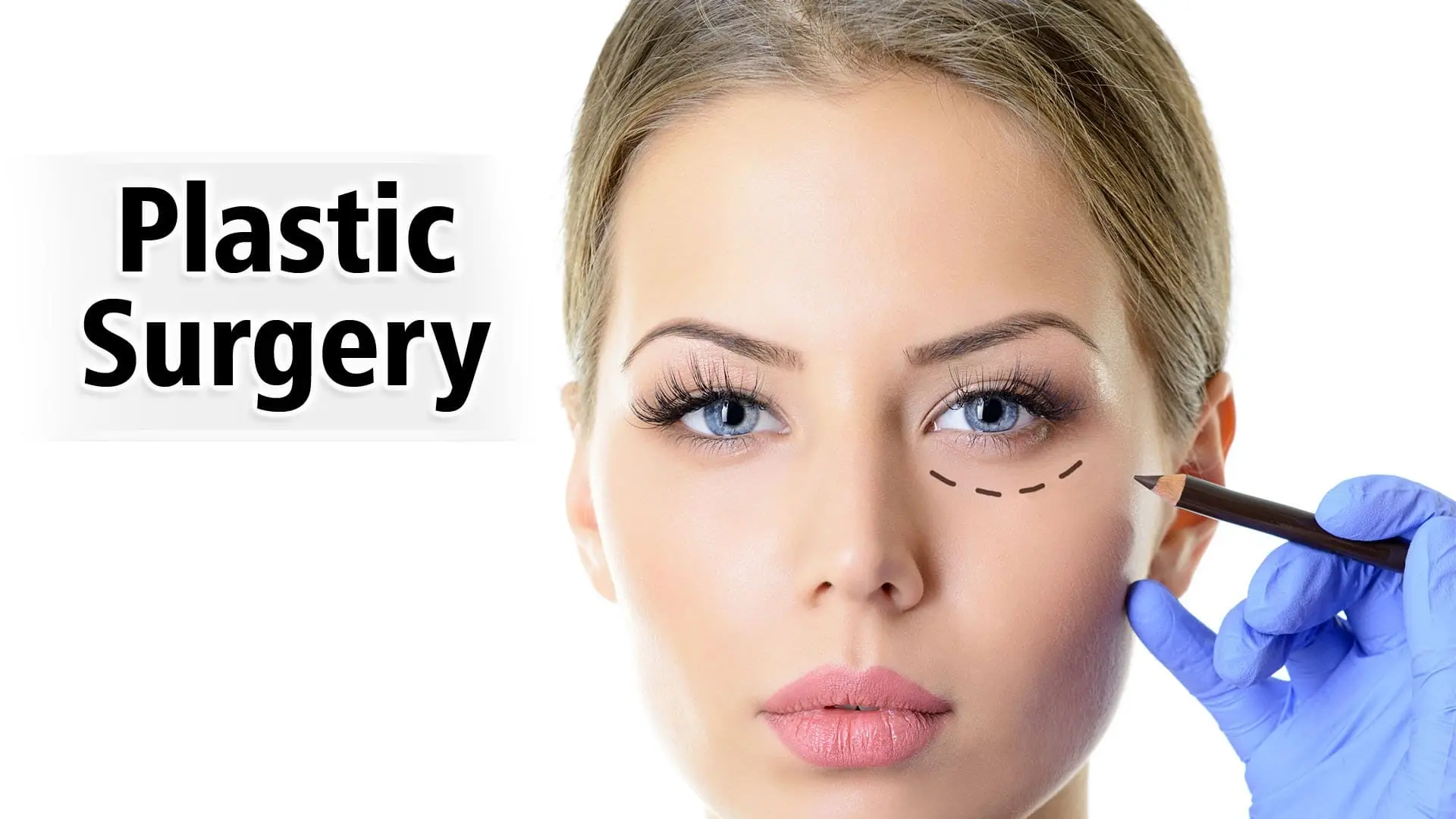
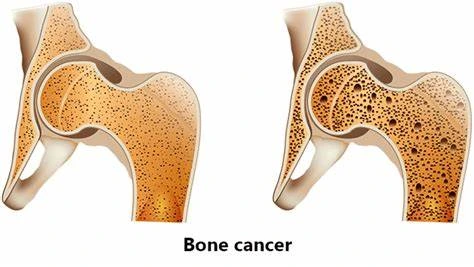
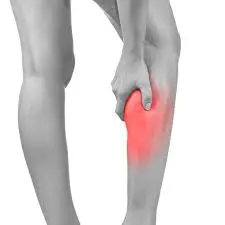

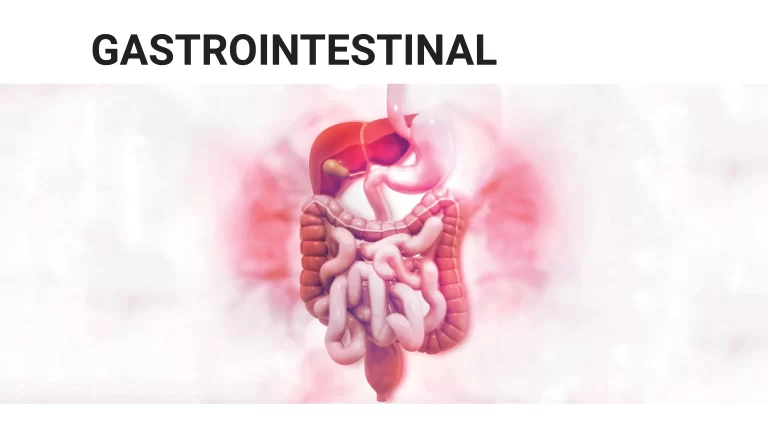
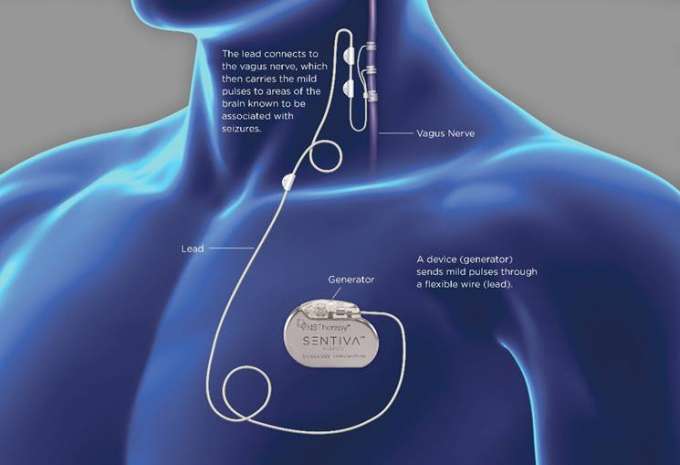
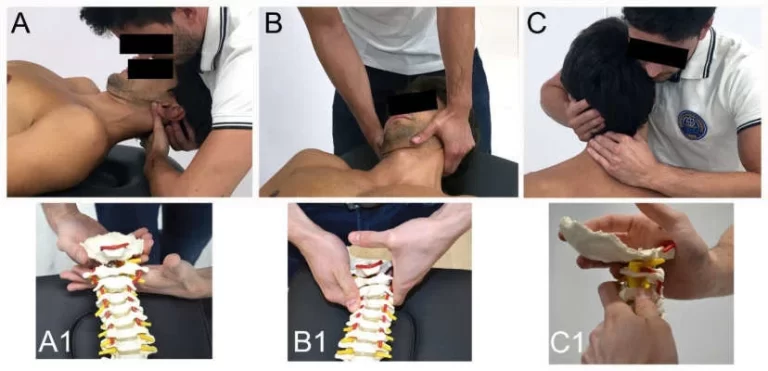
3 Comments